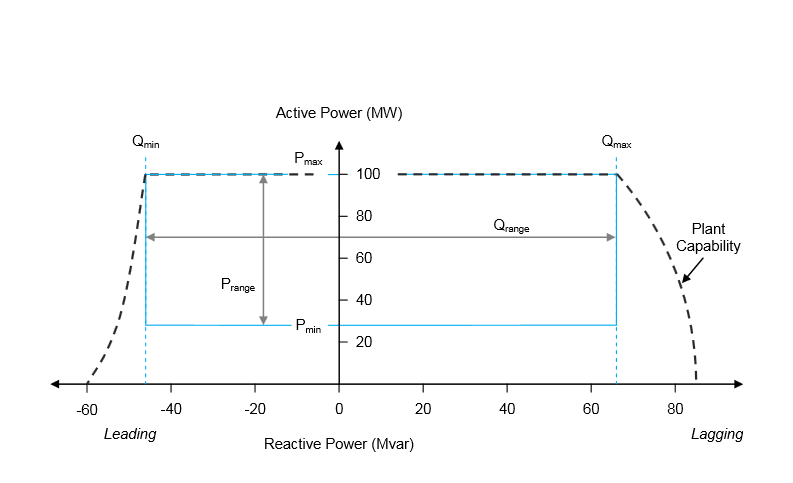Voltage Services
Dynamic Reactive Response
At high levels of instantaneous penetration of non-synchronous generation there are relatively few conventional (synchronous) units left on the system and the electrical distance between these units is increased. The synchronous torque holding these units together as a single system is therefore weakened. This can be mitigated by an increase in the dynamic reactive response of wind farms during disturbances. Therefore, a new service is proposed to incentivize this type of response, which is particularly important at high levels of renewable non-synchronous generation. In line with the proposed changes to the Grid Codes, a Dynamic Reactive Response product is proposed.
The Dynamic Reactive Response product is defined as the ability of a unit when connected to deliver a Reactive Current response for voltage dips in excess of 30% that would achieve at least a Reactive Power in Mvar of 31% of the registered capacity at nominal voltage. The Reactive Current response shall be supplied with a Rise Time no greater than 40 ms and a Settling Time no greater than 300 ms.

Fast Post-fault Active Power Recovery
Units that can recover their MW output quickly following a voltage disturbance (including transmission faults) can mitigate the impact of such disturbances on the system frequency. If a large number of generators do not recover their MW output following a transmission fault, a significant power imbalance can occur, giving rise to a severe frequency transient. It is proposed to introduce a service that rewards generators that make a positive contribution to system security.

Fast Post-fault Active Power Recovery is defined as having been provided when, for any fault disturbance that is cleared within 900 ms, a plant that is exporting active power to the system recovers its active power to at least 90% of its pre-fault value within 250 ms of the voltage recovering to at least 90% of its pre-fault value. The generator must remain connected to the system for at least 15 minutes following the fault.
Steady-State reactive Power
The need for reliable steady state reactive power control is important for the control of system voltages and for the efficient transmission of power around the system. Both synchronous and non-synchronous sources can contribute to this requirement.
The need for reactive power varies as demand varies and as the sources of generation vary. Since reactive power is difficult to transmit over long distances (unlike active power), reactive sources are required to be distributed across the system. Thus there is not necessarily a strong link between the need for active power and reactive power from the same sources. It is therefore proposed that the reactive power product is re-structured in a way that incentivizes reactive capability across the widest possible active power range (Prange).

The Reactive Power Capability product is defined for conventional generators as the dispatchable reactive power range in Mvar (Qrange) that can be provided across the full range of active power output (i.e. from minimum generation to maximum generation). For wind farms the Reactive Power Capability product is defined as the dispatchable reactive power range in Mvar (Qrange) that can be provided across the active power range from Registered Capacity down to at least 12% Registered Capacity.